Special Report: Inside the Hellish New Trauma of Living Through Multiple Mass Tragedies at Once
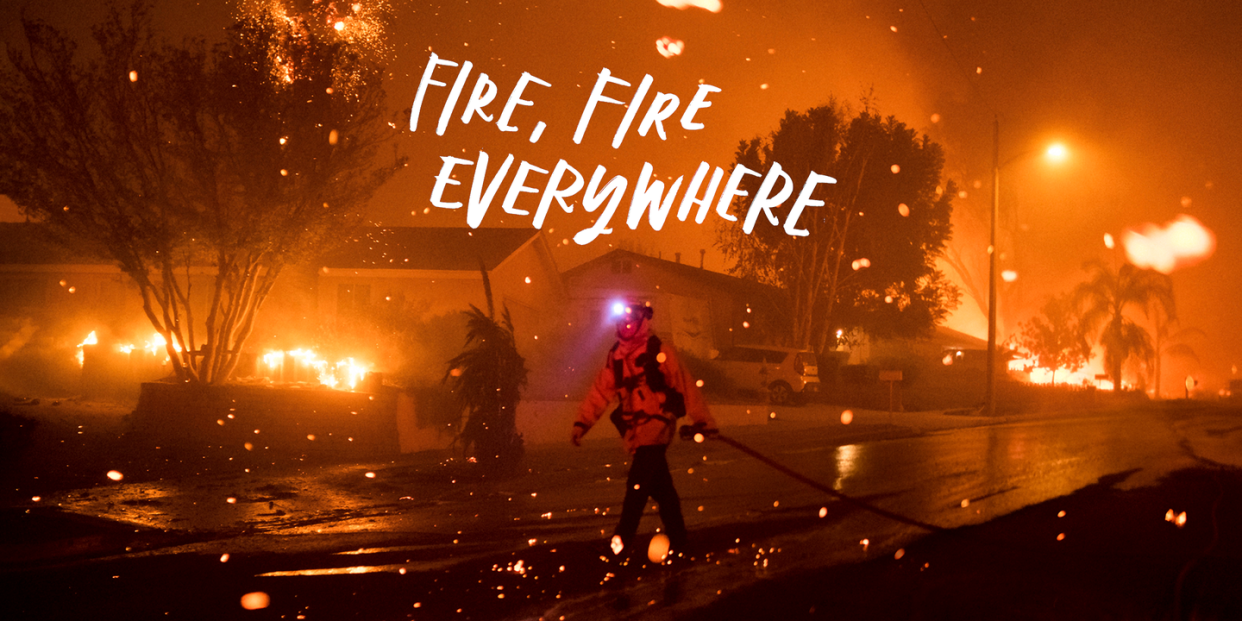
She wondered if she could scale the fence, if it came to that. Alicia Yu could feel it—her thoughts shifting into high gear again. On the surface, she looked like everyone else grabbing drinks on the patio of a Los Angeles brewery that day, just a recent college grad chatting with her new coworkers. In Alicia’s mind, though, the familiar what ifs were rising: What if a shooter shows up? What if we all need to escape? The fence between the patio and street was too tall to climb, she decided, and there were no windows to shatter like last time. She looked around at the crowd: baseball fans in jerseys celebrating the Dodgers’ victory over the Giants, friend groups petting cute dogs sprawled underfoot. She was vigilant. She knew terrible things could happen. Four years earlier, she had survived one, then another, in the very same week.
The night of November 7, 2018, started like pretty much any other Wednesday. As usual, Alicia’s close friend and suitemate Alaina Housley was taking forever to figure out what to wear. Alaina was the kind of person who believed there was a right way and a wrong way to do everything, and styling her blue flannel shirt and denim shorts for College Country Night at the Borderline Bar & Grill was no exception. The girls’ six other suitemates were losing patience (in a fun way) and trying to shoo Alicia and Alaina out the door. “Go!” they said. “You look amazing!”
Weekly line dancing at Borderline was a long-standing tradition for the students of Pepperdine University, a midsize Christian school overlooking the ocean in Malibu, California. Alicia had spent her life pouring all her energy into church and her studies, so College Country Night felt like her gateway to the exciting world of “going out.” Most places around Pepperdine close early, but not Borderline. In a beige stucco building next to a varicose-vein clinic in the nearby suburb of Thousand Oaks, it was the closest thing to a nightclub most of the students had.
Alicia, Alaina, and five other girls from the DeBell House freshman dorm—including Jordyn Regier and their senior RA Josie Utz—arrived at the bar a little before 10 p.m. The freshmen had their hands stamped with under-21 Xs, and everyone made their way to the dance floor. Jordyn, a biology major who’d never tried line dancing, was too shy to dance at first. But once she started, she liked it so much that she wanted to practice for next time with the video tutorials Borderline posted online.
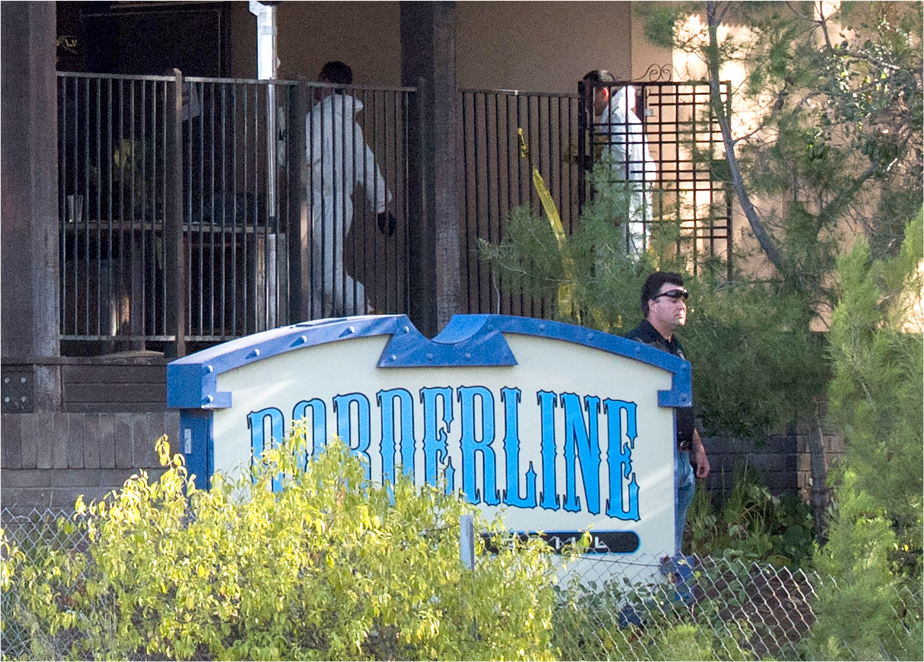
At 11:18 p.m., Chris Brown’s “Turn Up the Music” came on. Alicia and Josie laughed and switched to sweaty freestyling. Jordyn grabbed a table on the sidelines; by then, she needed a break. Alaina slipped out of sight somewhere in the crowd. And a man walked through the door with a .45-caliber Glock 21 handgun, modified with a high-capacity magazine, and started firing into the room at random.
Experts call it the illusion of control—the baseline human belief that we have the power to protect ourselves from harm. It’s part of what enables us to function in the world, says Karestan Koenen, PhD, a leading trauma expert and professor of psychiatric epidemiology at Harvard’s T. H. Chan School of Public Health. And we do have some control, she notes, but only to a point. When a life-threatening or terrifying event shatters that illusion of safety, the emotional impact can be swift and deeply destabilizing: trauma.
Alicia couldn’t see the gunman at first. For a second, she thought the shots might be part of some cheesy country-Western thing the bar was doing. The shots kept going, and her mind struggled to make it make sense. Maybe this is part of a song remix? she wondered. Then the screaming came, and someone yelled, “That’s a gun!”
Josie—in protective RA mode even then—seized Alicia and yanked her onto a dogpile behind the bar. Some people began hurling barstools and tables to shatter windows and escape. Josie saw the shooter turn toward her and Alicia. She did a quick mental calculation and decided she didn’t have time to grab a stool. So instead, Josie punched through the nearest window with her fist. Alicia barely remembers climbing out. “I genuinely don’t think I would have survived without Josie,” she says. “My brain could not function. I just remember it was chaos.”
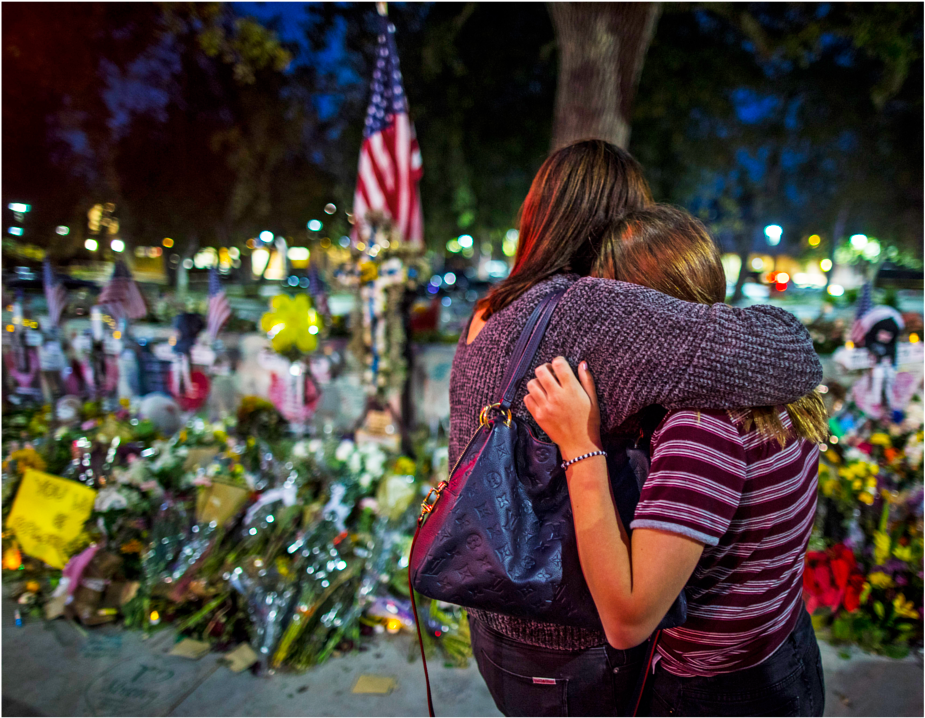
Meanwhile, Jordyn dove under her table. She remembered a Tumblr post she’d once read about what to do in a mass shooting, with tips for fleeing, hiding, and playing dead. It’s weird that I’m prepared for something like this, she recalls thinking. She scanned the room, tried to make a plan. When the shooting paused for a moment, she bolted toward a side exit and escaped.
The DeBell girls, minus Alaina, spotted one another in a parking lot across the street. Crouching behind a car, listening to the agonizing sounds of more gunshots and more screams—Alicia says, “That was when I realized the weight of what was happening.” She texted Alaina: “Hey, are you okay?”
A person can experience trauma as a direct survivor—living through a terrifying ordeal themselves—or as a bystander, an onlooker to others’ suffering. One devastating feature of collective traumatic events like mass shootings, Koenen says, is that they hurtle people into both categories at once. Alicia and the DeBell girls were terrified for their own lives. They had also just witnessed the unthinkable happen to their friends, to a roomful of people who had been out for a fun night only minutes earlier. If individual trauma says, “I’m not safe,” collective trauma says, “No one is.”
In the parking lot, people shouted that the shooter might be outside (he wasn’t, but no one knew for sure), so the girls fled on foot across a nearby golf course. By then, Josie’s hand and arms were bleeding heavily from having broken the window. The group moved as quickly as they could. Finally, they found a safe place to stop and called an ambulance for Josie. Jordyn called her parents, who lived close by. No one had heard from Alaina.
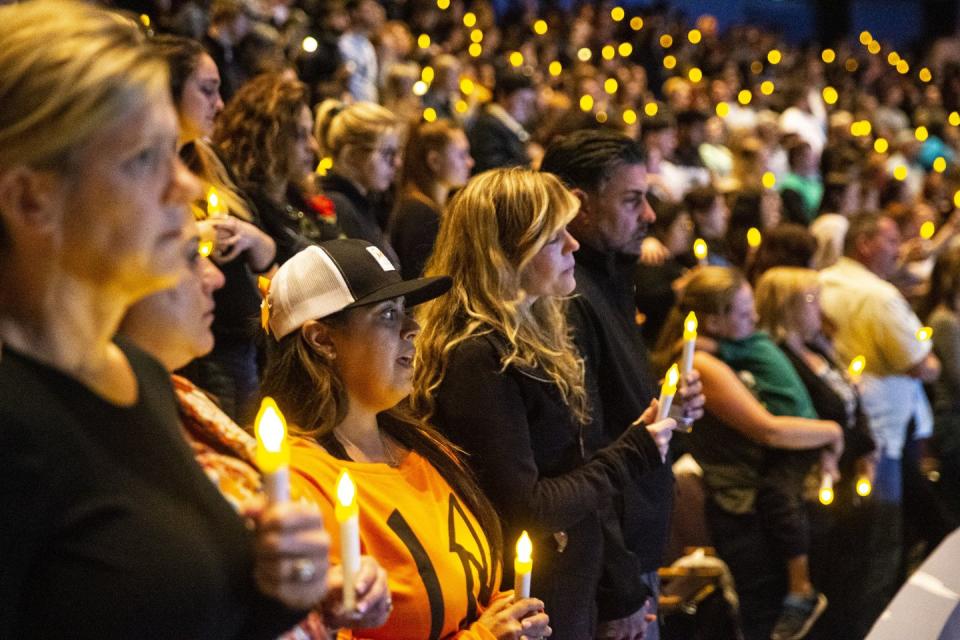
While the group waited for help to arrive, Alicia emailed her math professor. She explained in her message that, unfortunately, she wouldn’t be able to finish her homework that night because she’d just been in a mass shooting.
EVERYONE AT DEBELL HOUSE spent a sleepless night desperately awaiting news. Alaina and Alicia’s suitemate Ashley Mowreader, a journalism major, had been monitoring police scanners and sending out frantic tweets in hopes of receiving information about Alaina: “My suitemate is still missing. She is wearing denim shorts, a blue flannel, and sneakers. Pls let me know if you know anything.” DeBell resident Madeleine Carr, also a journalism major, had rocketed out of bed—so stunned that she forgot to take out her retainer—to cover the shooting for the Pepperdine Graphic, her first experience with breaking news as a student reporter.
At noon, counselors who’d been stationed in DeBell throughout the night asked all 50 girls in the dorm to gather in the lobby. One counselor pulled Alicia aside to privately share the news they were about to deliver: Alaina Housley, along with 11 other people (excluding the gunman, now also dead), had been killed in the shooting.
The shock was too much. Alicia found herself completely unable to react, her thoughts and body divided. You have to emote somehow, she told herself. Say something. Punch a wall. As Alicia stood frozen, many of the freshmen girls, upon hearing the news, broke down sobbing on the floor.
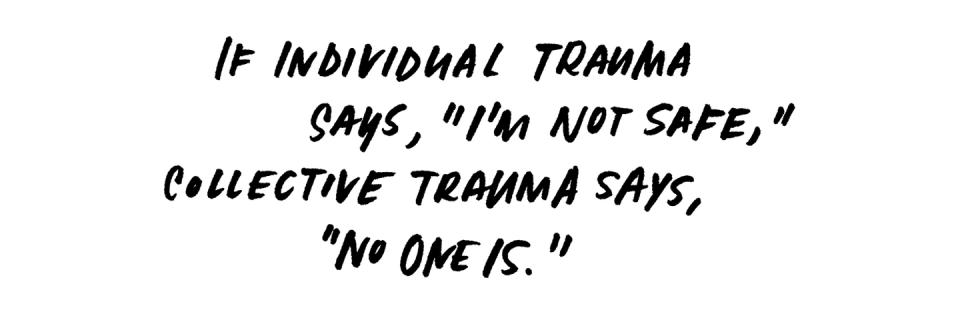
Some lingered there, forming circles, crying, trading stories about the friend they’d never see again: Alaina, who crafted delightfully ugly Mod Podge renderings of all her suitemates’ home states. Alaina, who was obsessed with the phone game Cooking Mama. Alaina, who bought dark-chocolate-covered graham crackers every time she went to Starbucks. (“I guess I hoard these now,” she once said to Jordyn, revealing a huge stash in her backpack. “Want some?”)
Most of those killed at Borderline were younger than 25, senseless deaths in a grim statistical story: As of 2020, gun violence became the leading cause of death in the U.S. among kids, teens, and young adults. One of those killed at Borderline, 27-year-old Tel Orfanos, had survived the Las Vegas festival shooting only the year before.
When night fell on Thursday, no one in Alicia’s suite—including Alicia—wanted to sleep alone. The girls dragged their mattresses to the common room. They lay together quietly, doing their best to drift off. Outside, high-speed winds rattled the trees and whistled against the windows. The girls didn’t realize it then, but the deadly Woolsey Fire was growing in a valley about 35 miles outside Los Angeles and moving toward Malibu. The next mass trauma was already on its way.
MENTAL HEALTH EXPERTS have traditionally sorted traumatizing events into one of two categories: single incidents (like a horrific car crash) or chronic, sustained states (think: living in a war zone). Recent events have upended that binary, giving rise to a troubling hybrid form of trauma that researchers are just beginning to explore in full. There’s not even a clear name for the phenomenon yet. Roxane Cohen Silver, PhD, a leading researcher in this field and a distinguished professor of psychological science, medicine, and public health at the University of California Irvine, alternately describes it as cascading collective trauma or cumulative collective trauma. Essentially, it’s what happens when distinct mass tragedies overlap or occur in quick succession.
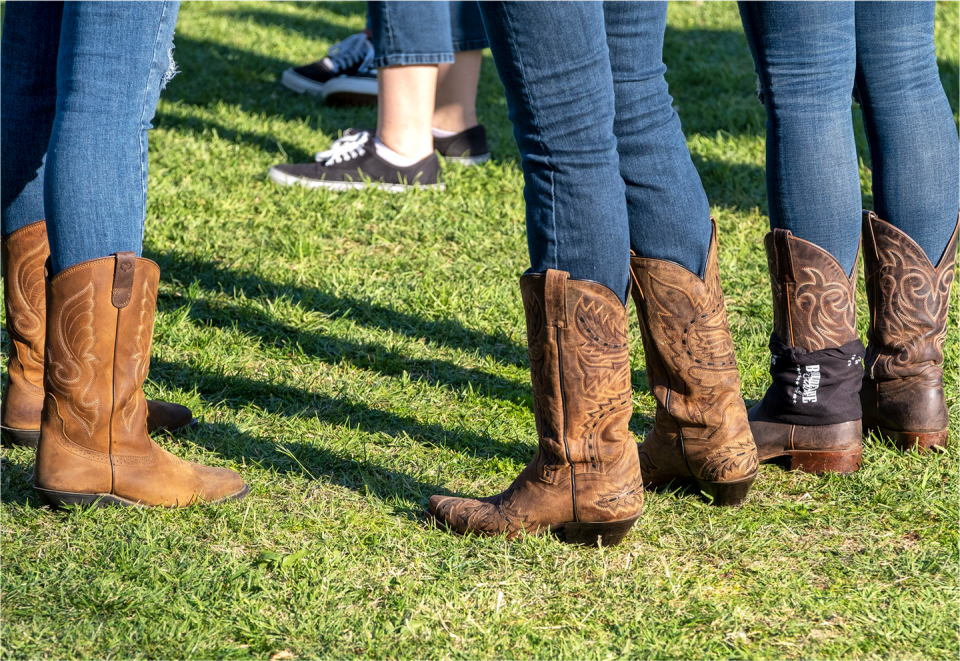
Even a brief review of very recent history turns up years of seemingly ceaseless mass shootings, a pandemic that has killed more than a million people in the U.S. alone, racist violence by law enforcement against its own citizens, natural disasters fueled by an ever-escalating climate crisis, the constant threat of economic collapse, and the war in Ukraine. Silver says, “We’re really trying to understand this very unusual period that we’re in right now, where it’s all bad news all the time.”
ALICIA AND HER SUITEMATES had barely woken up from their pile of mattresses on the common room floor when a DeBell RA rapped on the door with urgent safety instructions. “Pack up! There’s a fire in Malibu! We’re sheltering in the cafeteria!”
California was in flames that day, the girls learned, and emergency responders were outmatched. In the state’s northern region, an out-of-control blaze known as the Camp Fire was raging after destroying the town of Paradise and killing at least 85 people the day before. There in Southern California, the Woolsey Fire, stoked by drought conditions and 52-mph winds, had already burned 8,000 acres, jumped Highway 101, and turned the sage-green hills of Malibu obsidian.
With the fire at zero percent containment, the university quickly enacted the shelter-in-place protocols it had developed with local fire officials. Students weren’t barred from leaving, but the strong recommendation was that they stay—highway evacuation routes were crowded. Alicia didn’t have a car, so she didn’t have a choice anyway.
This is the apocalypse, she thought as she made her way to the cafeteria. Some students snapped pictures of smoke plumes in the distance.
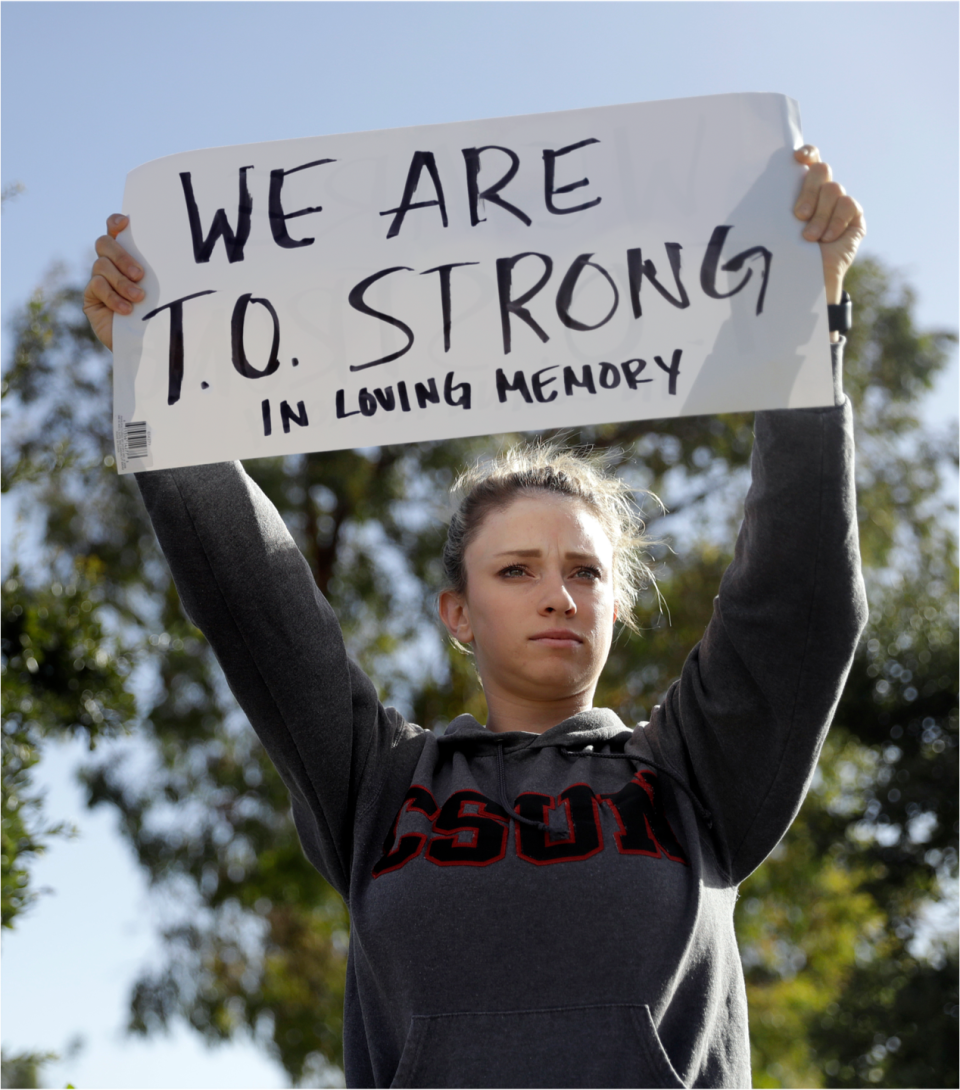
Madeleine was staying on campus too, the shock of another emergency in such a short period of time putting her on autopilot. “It was like a conveyor belt,” she remembers. “You’re on a line job—you do one thing, and then the next thing is right in front of you.”
Josie was on so many prescribed painkillers that she doesn’t remember much from that day. She’d gotten more than 50 stitches for the injuries she suffered at Borderline: a U-shape wound that sheared the skin off her right forearm, a deep puncture at the base of her palm, and two slices on her left arm. The fire emergency was yet another factor in her distress—grieving in a cafeteria filled with hundreds of people, all while hoping the place wouldn’t burn down.
People sometimes compare the impact of a collective trauma to dropping a rock in a pond: the disturbance most pronounced at the center, with rings rippling outward to represent the broader impact on loved ones of survivors, on communities, even on people following the news from far away, plausibly frightened that they might be next. But there’s a modern glitch in that pond metaphor: the premise of a clear, tranquil surface. “In general, people are designed to recover from negative events,” says Dana Garfin, PhD, a collective-trauma researcher at UCLA. The problem: “If those events are happening in rapid succession, people aren’t going to get a chance to return to that baseline.”
A better way to think of cascading collective trauma might be to imagine blobs of watercolor paint in different hues, applied one after another to a wet page. Each spot seeps outward while mixing with the colors beside it—overlapping, darkening, changing the whole picture.

IN THE EARLY HOURS of the Woolsey Fire, some Pepperdine students took a summer-camp approach to sheltering. One made a playlist of fire-themed songs. Another handed out dozens of plastic kazoos. Survival and coping looks different to different people, Garfin notes. Some strive to preserve as much normalcy as they can. Some, like Alicia, turn inward: The chasm between her classmates’ coping strategies and the way she felt inside (numb, grief-stricken, guilty) was “overwhelming.”
Dusk came, but the sky was already black. Pepperdine officials told students they’d be sheltering overnight. The mood turned more serious then. Alicia and Ashley went to the library, where smoke inside was thick. Students snapped N95 masks over their mouths and noses. University staff distributed bright-yellow emergency blankets for the night. Ashley and Alicia gazed out the windows. The blaze was visible now, a thin red line on the hillside, growing wider, brighter.
At 10:47 p.m., someone on the law enforcement team burst into the library, announcing that the fire had reached campus and that everyone needed to evacuate. “What are you still doing here?!” he shouted. Students flooded the exits, shoving past one another, before the fire team corrected the man and told everyone to remain in place. I have nothing left to give, Ashley remembers thinking in those moments. Next to her, Alicia felt certain: I’m going to burn alive.
By 2 a.m., the fire had advanced down the hillsides of Pepperdine. Two fire strike teams worked through the night to save the 1,000 or so people sheltering at the school, finally beating back the blaze a couple of hours after sunrise. The university lifted the shelter-in-place order and canceled classes for two weeks. The Woolsey Fire burned in the region for 12 more days, incinerating nearly 100,000 acres, leveling 1,643 structures, and taking the lives of 3 people.
FOR THE FIRST YEAR OR SO afterward, Alicia was haunted by nightmares. “I’d wake up in the morning and ask God to kill me,” she says. She couldn’t figure out how to make friends after all she had endured (should she tell them about November 2018? How?). Concentrating at school became nearly impossible. “How do you tell your professor, ‘Sorry, I fall asleep in your class every day because I dream about getting shot every night’?” Alicia may have survived, but she hadn’t fully escaped. “It affects every relationship that I have with anyone—my family, my friends, partners, whoever,” she says. “It seeps into every corner.”
Ashley experienced similar emotional fallout. “I think the more and more that trauma compounds, the more it becomes ‘you,’” she says. “It’s easy to get tumbled up in all these bad things that happened, to think, I’m a product of my environment. I never wanted that to be true.”
Cumulative collective trauma could become the next major mental health epidemic among young adults if this pattern of events persists, Garfin says. Gen Z is more likely than any other generation to report poor mental health, with 25 percent experiencing more emotional distress since the pandemic. Finding your way through multiple mass crises makes it hard to even figure out an adult identity. Garfin asks, “What’s different about society now? There’s more media, more news; these disasters are increasing. Young people are up against a lot more obstacles in terms of thinking about their future, their safety, and their security. They’re growing up with increasing threats.”
Alicia started therapy not long after the events of November 2018. Over time, she’s built a mental tool kit to ease her moments of panic—like when she smells smoke—and to manage the intrusive thoughts that tell her she should’ve done something to save Alaina. Senior year, she was the social media intern in Pepperdine’s Resilience-Informed Skills Education Program, where she also shared with students her experiences of living through back-to-back trauma.
“I think about this every day. It’s still very much a conscious part of my life,” she says from her apartment down the street from Warner Bros. Studios in L.A. “At the same time, it’s not what’s consuming me.” She graduated this year and has a job in the insurance industry. She has a car now, too, that she’s using to explore the city. The waves of difficulty ebb in and out, hitting hardest when Alicia sees other people just enjoying their days, seemingly unbothered by the fact that their sense of safety—everyone’s safety—is so provisional.
While there are some therapeutic approaches specifically designed to treat cumulative collective trauma, like those developed for war-stricken communities, Koenen says that “it’s hard to study the field scientifically, as each experience is so context-specific and it’s hard to know if what worked in one situation will work in another.” Silver recently finished data collection for a study that will examine the coping strategies of 6,500 people during the layered mass crises of the past two years, which she hopes will answer some key questions. Still, all the experts who spoke to Cosmo agree that treatment alone would never be sufficient: “It’s not enough to intervene in the aftermath of these tragedies,” says Sarah Lowe, PhD, a clinical psychologist and collective-trauma researcher at Yale. “We have to work to prevent them from happening in the first place.”
THE OLD BORDERLINE building is still there, empty now. In 2020, the bar’s owners opened a new location in nearby Agoura Hills, and College Country Night still happens weekly. By the time Ashley graduated, she was a regular. She’s since moved to Washington, D.C., where she works in business journalism—a beat that feels safer than hard news. Madeleine moved from her home state of Hawaii to Madison, Wisconsin, and has a job in PR. She loves the farmers market there and hopes she’ll learn to love the cold. Josie recently moved to Alaska with friends and runs a tutoring business. Jordyn, based in Thousand Oaks, is taking a gap year, hoping to rehabilitate wildfire-damaged ecosystems before starting a graduate program in ecology.
Two trees stand dedicated to Alaina Housley’s memory: an olive tree on Pepperdine’s campus and a cypress tree in Florence, Italy, where she’d planned to study abroad her sophomore year. On what would have been Alaina’s 21st birthday, in July 2021, Alicia met up with Ashley and Alaina’s other friends to decorate the Pepperdine tree. They climbed into its low branches, weaving purple and teal streamers through the leafy boughs, and propped a small bottle of champagne against the trunk. Alicia says it helps to be present with people who remember, who know what it’s like to try to make your way forward when you’ve survived so much.
Hand lettering by Mary Fama.
You Might Also Like